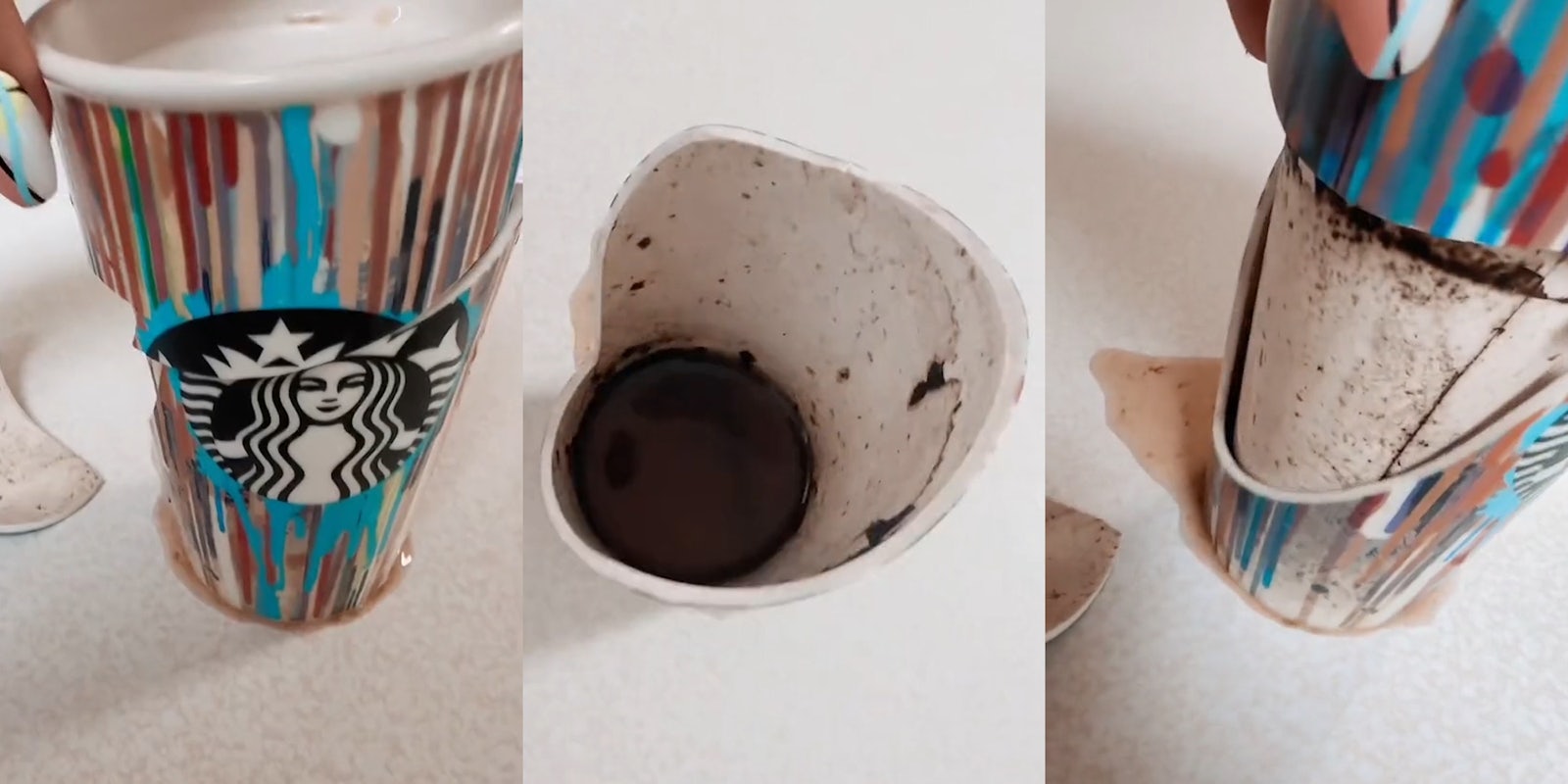A TikToker’s video showing what the inside of her boyfriend’s double-walled Starbucks mug looks like after it broke while she was washing it has drawn over 1.4 million views on the platform.
In the video posted by Chelsie Dahl (@chelsiedahl), the inside of the double-walled ceramic coffee cup is exposed, showing dark spots that she and viewers believe to be mold.
“Just a little caution if you’re drinking out of these Starbucks cups, my boyfriend just brought his in for me to clean it and I accidentally broke it,” she says in the video. “Kind of thankful I did. This is disgusting.”
@chelsiedahl 😳 after breaking it i did notice a hairline crack, be careful 🫣 #moldycup #starbucksmoldycup ♬ original sound – Chelsie Dahl
The Daily Dot has reached out to both Dahl and Starbucks directly via email regarding the video.
In her caption of the video, Dahl said she noticed a hairline crack in the cup, which may have allowed liquid to enter between the double walls and mold to develop.
Several viewers said they’d had similar experiences with double-walled ceramic mugs.
“Yeah, I broke mine and found dead worms,” one commenter wrote. “Never buying that kind again.”
“I had a ceramic Temptations one from qvc and it grew mold, tossed it,” another claimed.
“Wasn’t starbucks, but used to have a cup similar to this,” a third added. “One day I took it out of the cabinet and could feel water sloshing inside. Straight to trash.”
Others suggested possible reasons mold was able to develop inside the cup, ranging from cracks to included drainage holes.
“Double layer ceramic cups have to be fired with a tiny whole or theyll explode,” one commenter claimed. “Washing let’s water in but hard for it to dry out.”
“Condensation as well,” another suggested. “the temperature creates water between and it never drives out.”
“It probably had a crack and water got in,” a further user commented.



